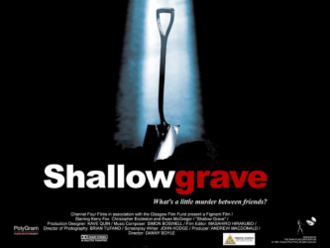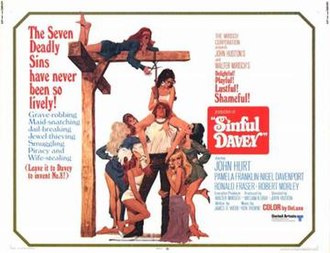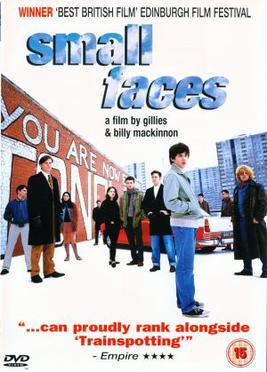Introduction to Scottish cinema
The first display of the Edison Kinetoscope recorded in Scotland was in Edinburgh on 24 December 1894, and the first projected moving images (most likely of Robert W. Paul’s and Birt Acres’s Kineoptikon) were demonstrated in Edinburgh on 13 April 1896. Cinema complemented a strong local music-hall tradition, and with dedicated film theatres appearing from 1909, Scotland became an important part of the British exhibition market, with marginally higher attendances north of the border than south (see britain, film in). From the 1910s the British film industry established itself in and around London, though some topical and actuality films had been made in Scotland, including a recording of Queen Victoria’s meeting with Tsar Nicholas II of Russia at Balmoral in 1896. The first Scottish feature film was Rob Roy (Arthur Vivian, 1911) and the earliest surviving feature is Mairi—the Romance of a Highland Maiden (Andrew Paterson, 1912): these films, along with a five-reel adaptation of Robert Louis Stevenson’s Kidnapped (George Terwilliger, US, 1917), are early examples of ‘tartanry’: the term refers to a romantic image of 18th-century Scotland traceable to the novels of Sir Walter Scott, and carries strong emphasis on local custom and costume, on chivalric code, and on the Highlander as noble savage.
Although this early period saw some Scottish-based filmmaking—by companies such as Greens and Scottish Film Productions—these were on a very small scale, and none survived the transition to synchronized sound. In the 1920s and 1930s, a number of Scots established themselves in the burgeoning British film industry. The best known of them is John Grierson, founder of the British Documentary Film Movement, who insisted that his energetic and influential filmmakers ‘looked northwards’; and many films were made by Scots (like Harry Watt) and on Scottish themes. Less known but no less influential is John Maxwell, who ran one of Britain’s most successful film studios, the Associated British Picture Corporation, from the 1930s to the 1970s. With no local film production to speak of, Scotland appeared as a backdrop in a large number of British and US films. The ‘tartanry’ tradition remained a staple, but was now joined by a cycle of films informed by a literary genre called ‘kailyard’, in which Scotland is portrayed as an isolated and insular parochial country made up of small towns and small islands within which local intrigue and homespun wisdom prevail. In US films such as The Little Minister (Richard Wallace, 1934) and Bonnie Scotland (James W. Horn, 1935), and in the British films Whisky Galore! (Alexander Mackendrick, 1949), Laxdale Hall (John Eldridge, 1952), and The Maggie (Alexander Mackendrick, 1954), groups of villagers and islanders defeat the forces of government and big business thanks to their irresistible charm and native cunning. Another key theme was ‘Clydesideism’: British films such as Red Ensign (Michael Powell, 1934), Shipyard Sally (Monty Banks, 1939), and Floodtide (Frederick Wilson, 1949), set in and around Glasgow at the height of the shipbuilding industry in the 1930s and 1940s, mythologized industrial Scotland. ...
Kuhn, A., & Westwell, G. (2020). Scotland, film in. In A Dictionary of Film Studies. Oxford University Press. Retrieved 18 Aug. 2022
In the library's collections/Searching the online catalog
Introductory reading(s)
-
Early Cinema in Scotland by
Call Number: Baker-Berry PN 1995.9 .S27 E27 2018ISBN: 9781474420341The popularity of cinema and cinema-going in Scotland was exceptional. By 1929 Glasgow had 127 cinemas, and by 1939 it claimed more cinema seats per capita than any other city in the world. Focusing on the social experience of cinema and cinema-going, this collection of essays provides a detailed context for the history of early cinema in Scotland, from its inception in 1896 until the arrival of sound in the early 1930s. ... -
Scotland: global cinema: genres, modes and identities by
Call Number: eBookISBN: 9780748633920Scotland: Global Cinema is the first book to focus exclusively on the unprecedented explosion of filmmaking in Scotland in the 1990s and 2000s. It explores the various cinematic fantasies of Scotland created by contemporary filmmakers from all over the world--including Scotland, England, France, the United States and India--who braved the weather to shoot in Scotland. ... -
Scottish cinema now by
Call Number: eBookISBN: 9781443803311Cinema from Scotland has attained an unprecedented international profile in the decade or so since Shallow Grave (1995) and Trainspotting (1996) impinged on the consciousness of audiences and critics around the world. Scottish Cinema Now is the first collection of essays to examine in depth the new films and filmmakers that have emerged from Scotland over the last ten years. ... -
Screening Scotland by
Call Number: Baker-Berry PN 1993.5 .G7 P46 2000ISBN: 9780851707853This title provides an overview of developments within Scottish film making, and looks at the institutional context within which successes such as Regeneration, Trainspotting, Carla's Song, and Mrs Brown have appeared. It also examines the history of Scottish film production.
Selected book titles
-
The cinema and cinema-going in Scotland, 1896-1950 by
Call Number: eBookISBN: 9780748638284What did our Scottish grandparents and great grandparents see at the cinema? What thrilled them on the silver screen? This is the first scholarly work to document the cinema habits of early twentieth-century Scots, exploring the growth of early cinema-going and integrating the study of cinema into wider debates in social and economic history. ... -
Contemporary Scottish fictions - film, television and the novel by
Call Number: Baker-Berry PR 8603 .P48 2004ISBN: 9780748617890The last 20 years have witnessed an unprecedented flourishing of cultural expression in Scotland, regarded by some as a response to a growing sense of political disenfranchisement. Contemporary Scottish Fictions explores some of the major figures, works, themes and aesthetics of this cultural renaissance in the high-profile areas of film, television drama and the novel. ... -
Directory of world cinema: Scotland by
Call Number: eBookISBN: 9781783203949Scotland, its people, and its history have long been a source of considerable fascination and inspiration for filmmakers, film scholars, and film audiences worldwide. A significant number of critically acclaimed films made in the last twenty-five years have ignited passionate conversations and debates about Scottish national cinema. Its historical, industrial, and cultural complexities and contradictions have made it all the more a focus of attention and interest for both popular audiences and scholarly critics. ... -
Never apologise: the collected writings by
Call Number: Baker-Berry PN 1998.3 .A525 A2 2004ISBN: 9780859653176Though he directed only a handful of films, Lindsay Anderson was -- and remains -- one of the most radical and influential voices in all of cinema. The director of such landmark films as This Sporting Life, If... and O Lucky Man!, Anderson was also a highly acclaimed stage director and a brilliant, provocative critic. Never Apologise collects some his finest essays, including pieces on Chaplin, Welles, and John Ford; England (he was a Scot); Gielgud and Richardson; and most illuminatingly, on himself. His work may not make for comfortable reading, but his wisdom and relevance are undeniable.
Other library resource(s)
-
British cinema from Oxford Bibliographies Online by
Call Number: Electronic resourceISBN: 9780199791286Before the 1960s, much historical and critical writing on British cinema was generated outside of the academy—for instance, a multivolume, largely economic history of the silent period, subsequently republished in the 1990s, was commissioned by the British Film Institute and sought extant personnel as consultants. With the introduction of film courses to British universities came an unfortunate prejudice against the homegrown product, largely inherited from European commentators.
Finding scholarly articles and journals
You can find scholarly literature for Scottish film studies in a variety of journals. However, if you want to do targeted searching, you can use a subject specific database such as Film & Television Literature Index. You can also use the search box at the top of the page.
-
 Film & television literature index
Call Number: Electronic resourceThis index covers over 300 journal and magazine titles for film and television reviews, scholarly and critical analysis of cinema and television, and articles of popular interest about film and television. About half the journals and magazines are film periodicals and the other half cover film and television with some regularity. Subject coverage includes film & television theory, preservation & restoration, writing, production, cinematography, technical aspects, and reviews.
Film & television literature index
Call Number: Electronic resourceThis index covers over 300 journal and magazine titles for film and television reviews, scholarly and critical analysis of cinema and television, and articles of popular interest about film and television. About half the journals and magazines are film periodicals and the other half cover film and television with some regularity. Subject coverage includes film & television theory, preservation & restoration, writing, production, cinematography, technical aspects, and reviews. -
Screen studies collection by
Call Number: Electronic resourceA comprehensive survey of current publications related to film scholarship alongside detailed filmographies. This collection includes the FIAF International Index to Film Periodicals Database and the detailed and complementary filmographies created by the American Film Institute (AFI) and the British Film Institute. -
Media history digital library by
Call Number: Electronic resourceThe Media History Digital Library digitizes collections of classic media periodicals that belong in the public domain for full public access. The project is supported by owners of materials who loan them for scanning, and donors who contribute funds to cover the cost of scanning.
The Collection feature extensive runs of several important trade papers and fan magazines. -
 The web of science citation databases
by
Call Number: Electronic resourceThe online version of 3 separate ISI indexes: Arts & Humanities Citation Index, Science Citation Index and, Social Sciences Citation Index.
The web of science citation databases
by
Call Number: Electronic resourceThe online version of 3 separate ISI indexes: Arts & Humanities Citation Index, Science Citation Index and, Social Sciences Citation Index.
Selected movie titles
Find more Scottish films in the library's online catalog.
-
 Anthony Shaffer's The wicker man
by
Call Number: Jones Media DVD #18637When a young girl mysteriously disappears, Police Sergeant Howie travels to a remote Scottish island to investigate. But this pastoral community, led by the strange Lord Summerisle, is not what it seems.
Anthony Shaffer's The wicker man
by
Call Number: Jones Media DVD #18637When a young girl mysteriously disappears, Police Sergeant Howie travels to a remote Scottish island to investigate. But this pastoral community, led by the strange Lord Summerisle, is not what it seems. -
 The prime of Miss Jean Brodie
by
Call Number: Jones Media DVD #1955A teacher in a 1920's Scottish girls' school captivates her students with her fascist ideals and free-thinking attitude.
The prime of Miss Jean Brodie
by
Call Number: Jones Media DVD #1955A teacher in a 1920's Scottish girls' school captivates her students with her fascist ideals and free-thinking attitude. -
Rob Roy by
Call Number: Jones Media DVD #5685ISBN: 9780792833666When a harsh winter threatens the majestic Scottish Highlands, Rob Roy MacGregor is forced to borrow money from the less-than-noble Marquis of Montrose to provide for his clan. When Montrose's evil henchmen conspire to take the wealth for themselves, they thrust Rob into the most challenging battle of his life. -
 Shallow grave
by
Call Number: Jones Media DVD #17464ISBN: 9781604655742When three friends find their new roommate dead and a suitcase full of money under his bed, they have no trouble deciding how to dispose of the cash, but the body is a different story. Their troubles are compounded when they meet the men who come to retrieve the money.
Shallow grave
by
Call Number: Jones Media DVD #17464ISBN: 9781604655742When three friends find their new roommate dead and a suitcase full of money under his bed, they have no trouble deciding how to dispose of the cash, but the body is a different story. Their troubles are compounded when they meet the men who come to retrieve the money. -
 Sinful Davey
by
Call Number: Jones Media DVD #17178In 1821 a young Scotsman decides to emulate his father, a notorious rogue and highwayman. Unfortunately, he is handicapped by the fact that his childhood playmate is equally determined to track him down and save his soul.
Sinful Davey
by
Call Number: Jones Media DVD #17178In 1821 a young Scotsman decides to emulate his father, a notorious rogue and highwayman. Unfortunately, he is handicapped by the fact that his childhood playmate is equally determined to track him down and save his soul. -
 Small faces
by
Call Number: Streaming videoGlasgow 1968. Lex Mclean is 13 years old and a genius - just ask him. His older brother, Bobby is 18, all temper and nightmares, while Alan the middle brother paints his dreams on canvas. Conflict erupts daily. And then there's Joanne: a sweet 16-year-old know-it-all taken with Alan, toying with Bobby and courted by Lex. While their mother Lorna imagines a brighter future, her sons accidently slip into a small circle of senseless violence.
Small faces
by
Call Number: Streaming videoGlasgow 1968. Lex Mclean is 13 years old and a genius - just ask him. His older brother, Bobby is 18, all temper and nightmares, while Alan the middle brother paints his dreams on canvas. Conflict erupts daily. And then there's Joanne: a sweet 16-year-old know-it-all taken with Alan, toying with Bobby and courted by Lex. While their mother Lorna imagines a brighter future, her sons accidently slip into a small circle of senseless violence.
Internet resource(s)
-
Creative ScotlandCreative Scotland is the public body that supports the arts, screen and creative industries across all parts of Scotland on behalf of everyone who lives, works or visits here.
-
Scottish FilmBrand Scotland has a clear vision; for Scotland to be recognised as a leading global citizen and a highly desirable country in which to live, work, study, visit, trade and invest. It brings together the collective communications efforts of the Scottish Government and key partners (VisitScotland, Scottish Development International, Highlands and Islands Enterprise, Universities Scotland, Creative Scotland and Scotland Food & Drink) to harness our energy, expertise and resources and to increase the impact of all our work in building Scotland’s global reputation. ...

 Want an easy way to keep up with the journal literature for all facets of Film Studies? And you use a mobile device? You can install the BrowZine app and create a custom Bookshelf of your favorite journal titles. Then you will get the Table of Contents (ToCs) of your favorite journals automatically delivered to you when they become available.
Want an easy way to keep up with the journal literature for all facets of Film Studies? And you use a mobile device? You can install the BrowZine app and create a custom Bookshelf of your favorite journal titles. Then you will get the Table of Contents (ToCs) of your favorite journals automatically delivered to you when they become available. 


